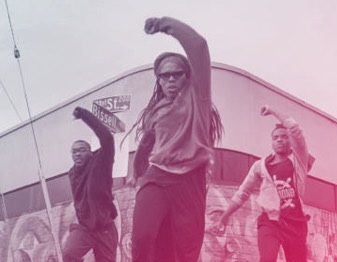At its best, the curatorial hand is visible but not heavy. It allows individual pieces to play off one another, creates a space that is inviting and intriguing, and provides the viewer with plenty on which to ruminate. For In Stasis, a thoughtful group show at Oakland’s MacArthur B Arthur, curators Aaron Harbour and Jackie Im bring disparate works together with good humor and great care, staging a dynamic exhibition on the most sedentary of subjects.
Unassuming from the street, the gallery occupies the front half of a storefront apartment on Martin Luther King Jr Way. Inside, the space is as close as one gets to a white cube when a kitchen and living area are still visible from certain angles. Made up of video, photographic, sound, and installation works, In Stasis involves six local and international artists whose contributions touch on stillness, repetition, and inactivity without ever inducing boredom.
Just inside the front door, Bob Linder’s piece Untitled (Chiara) sets the tone for the exhibition as a whole. A camcorder on a tripod is trained at a wicker chair in the corner. The pop-out screen of the camera shows the same scene, but with a seated woman occupying the frame, her long hair completely obscuring her face. Seeing someone who is not there recalls a horror film shock strategy. The piece is simple but effective: one visitor ran his hand in front of the camera, remarking, “She’s not there.” The absurdity of this comment — clearly, the real-life chair was empty — highlights the strange limbo created by In Stasis, again and again.
The largest work in the show (both in terms of physicality and narrative) is Johanna Billing’s Project for a Revolution. In this short video, a group of people in their twenties sit crowded in a room, looking restless and serious. Meaningful glances pass between people, but there is no meaning to infer. A man enters and exits with no change registered upon his companions. The video lures viewers into watching it repeatedly, as they too wait for something, anything, to happen. On the adjacent wall, Liam Everett’s assemblage of fabric and wood stands propped like a political banner waiting to head a similarly bright-eyed crowd. The incendiary message, however, is traded for an alchemical mixture of ink, acrylic, sea salt, alcohol, and lemon extract — a dark silk shroud.
Anna Sagström’s work capitalizes on the same quality of untapped potential. In the small viewing room at the front of the gallery, a monitor shows Come Back, a looped video of a heavy-breathing man playing table tennis and sitting beside the table, alternatively. To the right of the screen, a metal shelf supports a Newton’s cradle (a set of swinging silver balls more commonly seen on the desks of executives). The metallic clicking, combined with the bouncing ping-pong balls, creates an aural dissonance echoed in Sagström’s second piece, Untitled (Coming Down) and Untitled (Breaking Down). A pair of mp3 players blast looped segments of two R&B songs through ear buds. With or without listeners, the piece continues indefinitely, a closed system of call and response.


